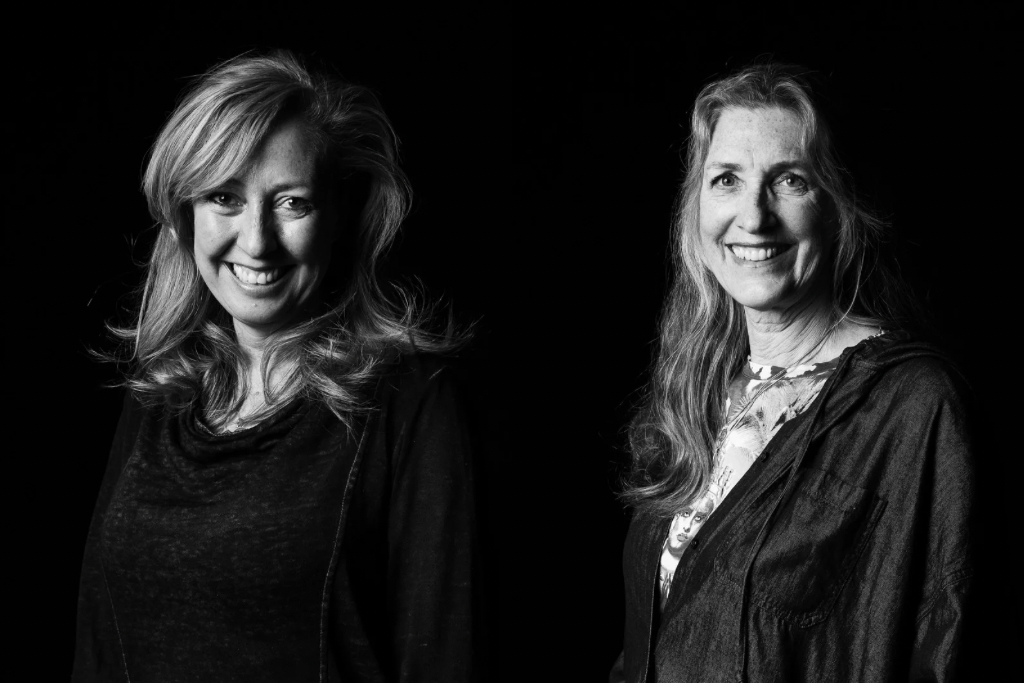Saying yes to everything and making the impossible possible

For set and lighting designer Bretta Gerecke and costume designer Marrit van der Burgt, creating theatre is like being on a treasure hunt – you never know where you’ll end up or what you’ll discover along the way. And there are many paths to reach that treasure. One essential condition: saying yes, in order to keep every option open. A conversation about Le Villi & Silenzio and the role their designs play in this opera.
Where do you find inspiration for your designs?
Marrit: ‘As soon as I read a libretto or script, images and colours appear in my mind. Then I dive into books, photographs, films, and reflect on the many journeys I’ve been on. For Le Villi, I thought of old Japanese villages, where men and women dress almost identically in natural fabrics like linen and cotton. That Japanese style of draping fabric around the body works really well in this concept. The dancers and singers actually shape the costumes: they create the silhouettes through movement – I just provide the material.’
Bretta: ‘Because Le Villi is mainly set in the woods, my starting point was nature. I looked at trees, installation art, sculpture, and land art. Dreya’s background and wishes in choreography and aerial performance also guided us. Those stretchy, transparent materials – essential for movement on the ground and in the air – formed the foundation. That eventually led to this transforming forest.’
Bretta, how do you translate the themes of Silenzio and Le Villi into a visual world?
Bretta: ‘The stage is essentially a closed circuit of fabric, with trees at the centre. There are also fabrics that fly in and out of the stage, reshaping the set again and again. In Silenzio, we use those borders to represent Anna’s emotional world – sometimes she hides, sometimes she reveals herself. With just a few elements, we can distinguish between Silenzio and Le Villi, while also emphasizing their narrative connection.’
Marrit, what is the core concept behind your costume designs?
Marrit: ‘The Villi are dead and buried, but they live on through the trees; so their clothing is timeless yet decayed. The degree of decay reflects how long they’ve been among the Villi. At the same time, we want to show which family members (living or dead) are connected – we do that through different color accents in their clothes. There’s also a clear contrast between the Villi’s natural world and the dark, chaotic city where Roberto must claim his inheritance. For the city costumes – in contrast to the flowing fabrics of the natural world – I created strong silhouettes that complement the images Bretta creates in those scenes.’
Bretta: ‘The city is definitely the opposite of nature, with almost geometric shapes. With the lowered panels and our use of light and color, we create a completely different world.’
How does the collaboration with everyone involved unfold?
Bretta: ‘Theatre-making is a living process, and each production is unique. Change one element – one singer or one dancer – and everything shifts. We’re one organism, creating something that can only exist in this moment. It’s a bit like being on a treasure hunt: you can take many routes, and you never know who brings what, what you’ll carry forward, or where you’ll end up.’
Marrit: ‘I love that there’s space for improvisation. Just recently, we suddenly came up with the idea that someone needs to go up in the air – upside down – even though that could be tricky. But then Dreya said, ‘if something’s difficult, that’s exactly what makes it interesting to watch.’ I love that attitude: that’s how the most beautiful things come to life!’
Bretta: ‘That’s what we call Yes and… No no, or yes, but.’
Marrit: ‘No isn’t an option. If you want to make theatre, you can’t say no.’
Bretta: ‘Exactly. You have to explore all possibilities. You have to go on that journey to discover where you’ll end up. There’s only one thing you know for certain: the curtain will go up. And no designer ever feels like it’s truly finished.’
Marrit, laughing: ‘And yet it is finished on opening night. Simply because it has to be.’
Interview: Kyra Bertram
